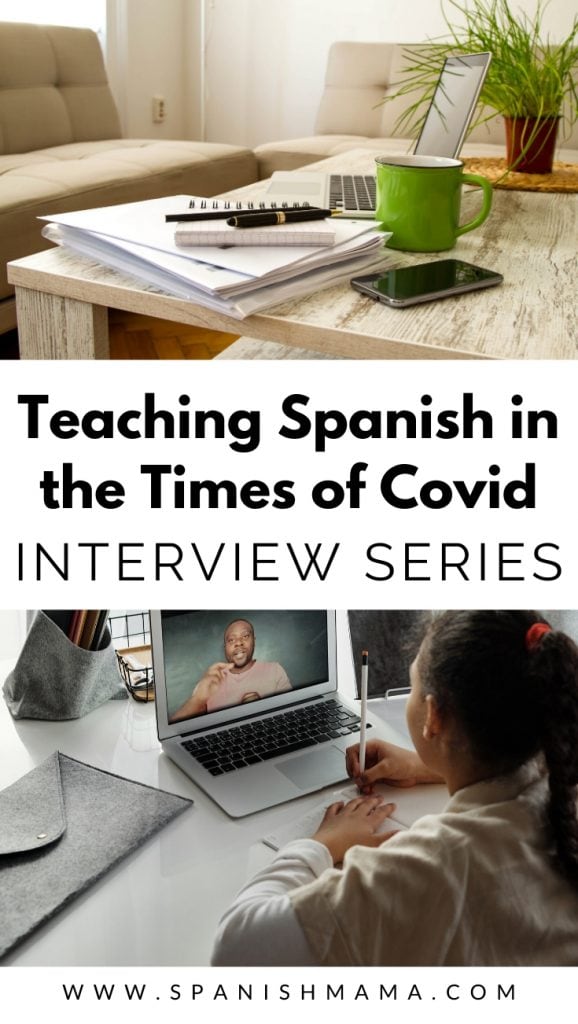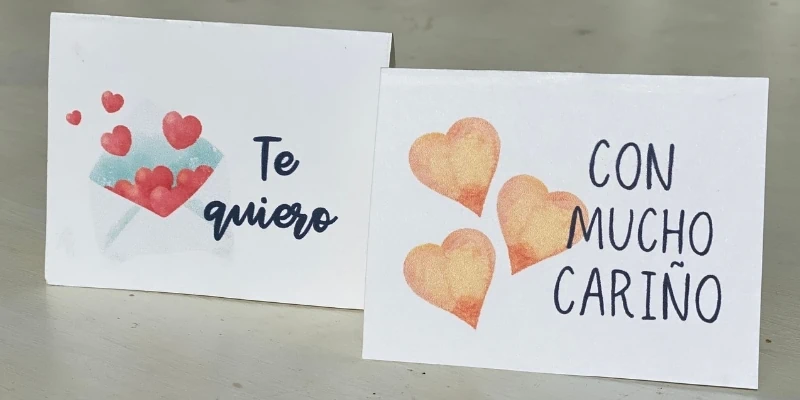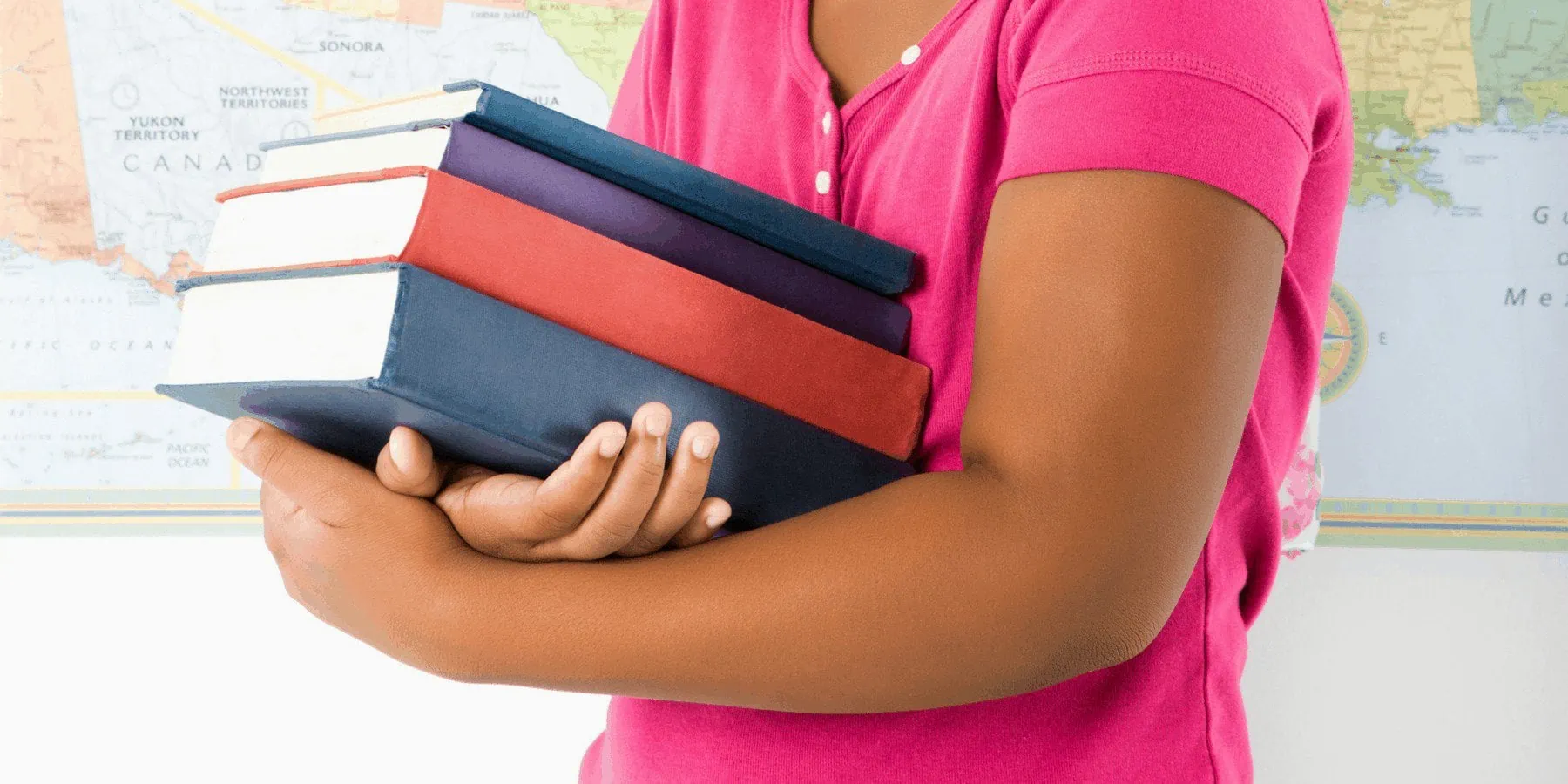Spanish Teacher Covid Interviews, Part 3
Inside: A panel of Spanish teachers share their experiences of teaching in 2020 during Covid-19.
Today I’m sharing our third and final post in our pandemic-edition of Spanish teacher interviews. A huge GRACIAS to all the wonderful teachers who participated and invited us into their lives and classrooms.
As you’ll see, most teachers experience a myriad of emotions, and ups and downs. I hope you’ll find encouragement in knowing you are not alone.
In this series, we’re hearing from Spanish teachers on just what it was like and how they managed. Be sure to check out Part 1 and Part 2.
There’s a lot of information in this post, so here are links to each section in case you’re looking for something in particular:
- Introductions
- What it was like when your schools closed down?
- What did remote teaching look like for you?
- What was it like for YOU, on a personal/emotional level?
- What did you feel like went well?
- What was the biggest challenge?
- How are you spending your summer?
- Does your school have a plan in place for the fall?
- Do you have any advice or thoughts for your fellow Spanish teachers?
Let’s hear from our third panel of Spanish teachers!
MEET OUR SPANISH TEACHERS
Spanish Mama: Please introduce yourself and your teaching situation!
Carolina: ¡Hola! I’m Carolina Gómez. I am a K-5 Spanish teacher in Austin, Texas. This is my 19th year as a Spanish teacher in the United States. I also taught kinder for 3 years in Colombia before moving to the States.
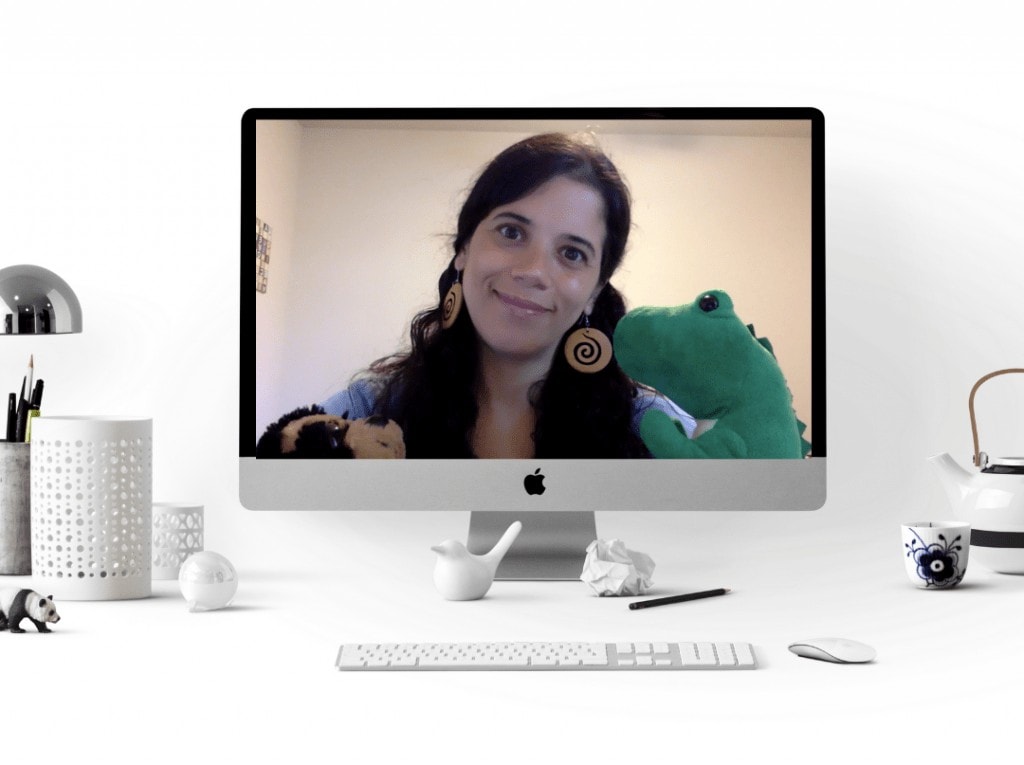
Carolina
I run a blog called Fun for Spanish Teachers, a space where I share tips and resources for teaching Spanish at the early and elementary level.
Heather: I am Heather Nayback, veteran teacher of more than 20 years. I love teaching Spanish (Spn 1, 2, 3, and used to be AP). Here’s my Spanish teaching page.
Nella: My name is señora Nella Portal. I have my associates in early childhood development and I teach ages 6 months – Highschool kids. I have been teaching since 1993. I have a Spanish program called Spanish for Ninos LLC located in Columbus, Ohio. You can check out our Facebook page and IG page @Spanishforninos.
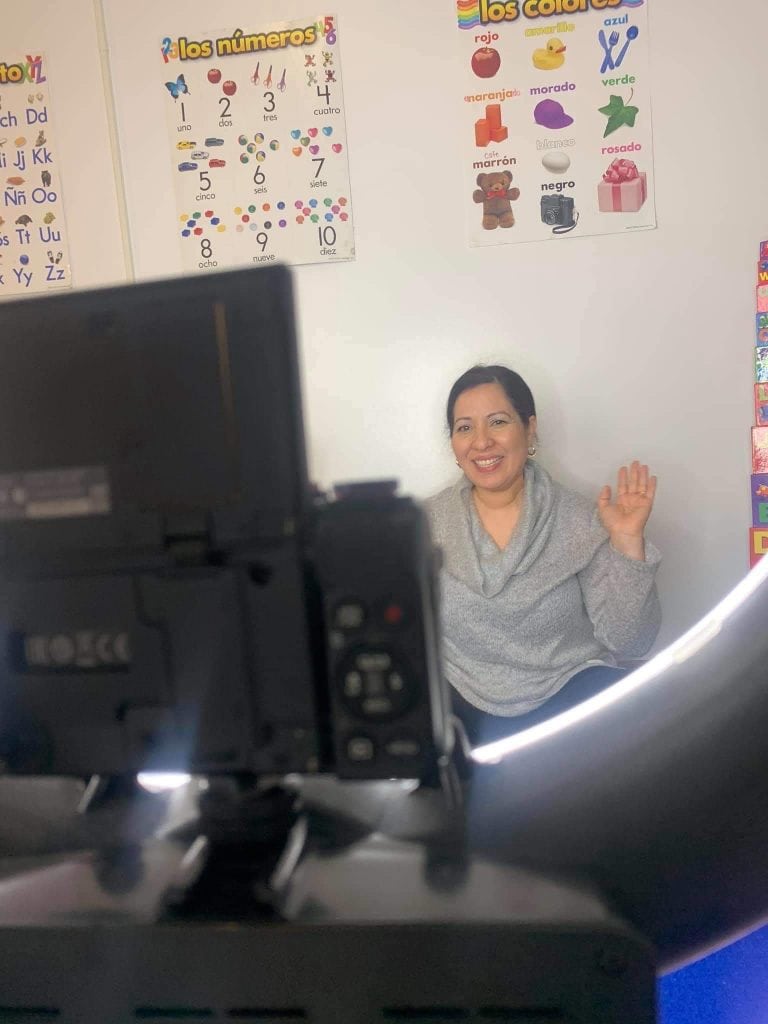
Nella
Molly: This past year was my 5th year teaching. I teach in Northeastern Pennsylvania at the high school level. This year I taught students in grades 9-12 in Spanish1, 2, and 4H.
Karen: My name is Ana Karen GT aka Ms. Karen, and I am pretty new to teaching Spanish. Although I do not have a teaching background, I speak Spanish (my native language) and English (beginner in French,) so I find all about learning and teaching languages fascinating. I have taught Spanish to a small group of homeschool middle and high-school students for about a year and a half and recently started teaching preschoolers as well. I would like to expand my teaching to different age groups in the future as well as get certified as a world language teacher (Spanish and English). Oh, I am orgullosamente Latina y Mexicana living in the wild and wonderful West Virginia. You can find me on Instagram as ms_karengt !
Marilyn: My name is Marilyn Alonso and I have been teaching for 11 years. I am a Spanish teacher at Holy Spirit Regional Catholic School in Huntsville, AL and teach Pre-K to 8th grade.
SHUTDOWN
Spanish Mama: What was it like when your schools shut down?
Carolina: We knew the COVID challenge was becoming more serious, but everything happened so fast. We were thinking that we would be able to be in the school one more day without our students to plan in case we couldn’t go back after our break. The school had to close on Friday before the break and we basically spent our spring break meeting and planning how online teaching was going to be for our school community.
Heather: I was not surprised that our school had to shut down, but I was surprised how fast it occurred. Our administration thought things would equate to a more lengthy spring break, so getting students back to virtual learning was quite a challenge. It seemed like it was overnight, and many were shocked that things could happen even in the Upper Peninsula of Michigan.
Nella: Spanish for Ninos closed on 3/16/2020 but continue teaching online. Everything due to COVID-19. I was not given any guidelines. I just followed the news and our Ohio state health department guidelines.
Molly: We were not given much notice at all. The week that we closed we were actually told it was unlikely for us to close at all, unless someone within a building became sick. We were scheduled to have parents come to the school building for conferences and the day of conferences (Thursday) at the end of the day we had an emergency meeting to discuss what was going on. A neighboring county had gone into an emergency lock down and all state employees were told to work from home. Our principal told us that we would have conferences by phone only and that for the time being there would be no visitors allowed in the building at all, including parents. We would only close if there were not enough staff available to safely run the building. The principal asked how many staff members lived in the county that was shut down and half our staff raised their hands. We were wondering if we would close because teachers are considered state employees and so many of our team worked in the county that shut down. However, our school district sent out an email that night that said teachers are NOT state employees and we needed to continue to report to work. The next morning we came in and the building was buzzing because the neighboring county had shut down its schools because it determined teachers WERE state employees and could not report to work. We spent the day fielding questions from students about if we would be closing or not. We received an email in the morning saying that our superintendent was having a meeting at noon to determine if we would shut down for two weeks, but to prepare to bring home anything we needed because we would not be allowed in the building. At the end of the day we were told we would be closed for two weeks but that we would NOT be doing any instruction because that would create problems with our students with disabilities being able to receive FAPE. The first week we did not do anything except enrichment activities and were told to treat the days like snow days. The second week we were told that we WOULD be starting virtual instruction but that we would not be grading anything and that everything would be optional for students to complete. We were not allowed back into the building to get any supplies or materials. We ended the official, graded school year in March and the rest of the year was optional and ungraded for students.
Karen: I have total freedom to plan my classes and I usually design them for 10 weeks during the Spring and Fall semesters. We had just had our first in-person class (on March 11) when we went on lock down immediately after. I was extremely upset because all my planning got ruined. I went into denial and anger for a few days, but then I realized that my students were willing to continue learning even from the distance, so I started looking into online practices. I wasn’t given too much teaching guidance or instructions (department of one.) However, our team’s communication department did support us with a list of resources from which we could choose to teach virtually. They also made it clear that we could reach out to them if needed. 2 weeks after, I had my first “remote class” via Zoom.
Marilyn: There was not much warning. We were in school on Friday and on Monday we were told that we were going to remote teaching. Our school was not really prepared for teaching remotely, but we managed to do it. All the teachers had to learn new ways of teaching and students too. It was wonderful to see how we all united and helped each other.

REMOTE TEACHING
Spanish Mama: What did remote teaching look like for you?
Carolina: The school where I teach has a 10-day cycle. I normally get to see my students for 7 days out of each cycle. When we moved to remote teaching, a regular Monday thru Friday schedule was implemented so I lost a lot of contact time with my students. I saw my students once a week and supplemented another class with videos, activities on Seesaw, and Google Classroom.
We had a lot of meetings after our teaching time during the first 4 weeks of remote teaching. It was a time to reflect and make sure we were getting to every single student in our community.
Heather: I follow National Foreign Language objectives, so that wasn’t a big deal, but we were told to minimize expectations, so that students would not feel stressed. I felt like I had to teach my top 3 important ideas and getting that done was tough. Some teachers did very, very little, so having students do much (for only some teachers) was difficult. I was able to contact another foreign language teacher who used a gaming method where students learned at their own pace and I used it as my foundation. She teaches French, so I had to modify hundreds of her slides to Spanish instead (including all the links/vocabulary). I spent the “spring break” prepping for a likely lengthy online teaching—and I am glad I did or I would have really been panicked when my district resumed school, albeit online.
Nella: I was in shock about teaching online since I’m more hands on and in person teacher. I love to interact with my students, and use lots of fun props as well as music. But we created a private FB page and my daughter started recording my classes. I immediately uploaded my classes for my current enrolled students.
Molly: We were completely optional for students. They could choose to participate or not participate. We were told to be asynchronous so that students didn’t need to attend class at any given time in case they had other home responsibilities. We also were not grading any work, only giving “feedback”. We had a learning platform to post work on but there wasn’t any consistency between teachers about what their set up looked like or how it functioned. We were told to continue with the planned curriculum, get as far as we could, and we would figure it out next year. Students had classes Monday through Thursday with about 30 minutes of work for each class. On Fridays teachers had a full day of meetings and professional development.
Karen: Our class would have met twice a week, but since Spanish is not a core course for my students, I decided to shorten my lessons and meet, via Zoom, for once a week on Fridays for 1.5 hours. My routine was usually a lesson introduction, brain break and some sort of game to practice the vocabulary. We used Google Classroom and I assigned optional homework after each session. I tried my absolute best to keep our classes as engaging as possible.
Again, I have total freedom to design my classes and as a department of one, I had no guidelines other than what I thought appropriate to provide my students with at least a small dose of Spanish. I owe the success of my classes to the wonderful teachers I had the pleasure of learning from through some Facebook groups and Instagram. I have expressed my gratitude and admiration for you, Elisabeth, as well as other heart-warmed humans such as Claudia Elliot, Bertha Delgadillo, Ashley aka Srta Spanish, Erin Coleman, Martina Bex, Annabelle aka la maestra loca, Jade from la Secundaria to just mention a few. Connecting with all of you was a total game and even life changer!!! I cannot state enough how much I have learned from all the training and tips I’ve gotten through the Facebook groups and Instagram.
Marilyn: At the beginning, chaotic, but once we got the hang of it, it was fine. What guidelines did you have to follow? Not much.
BEING A REMOTE TEACHER
Spanish Mama: What was it like for YOU, on a personal/emotional level?
Carolina: It was extremely tiring, especially after having to spend a lot of time in front of a computer. It was also sad that I didn’t get to see some of my students because some classes became optional for them. My class also was scheduled in the afternoon, so I can only imagine how tiring that would have been for a child to be in front of the computer too, seeing their friends only through a screen.
Heather: Honestly, I was quite bored. I was looking forward to getting something done during the stay at home order. I really missed and I really worried about my students. I am a very active teacher (physically, I move a lot about the room), so once I was teaching in a more stationary/computer set up, it was challenging to stay seated and on camera (it still is). I was starting to get depressed due to our lengthy winters up here. My family had saved for years to take a spring vacation to Costa Rica (language practice, yay!) and we didn’t get to go. Thankfully, I also teach college courses (in English) and that class went on well before “normal” school resumed. It was actually a relief to have classes, student questions to be answered, and assignments to grade while I waited for the rest of school to resume. In short, it’s hard for me to be in “non school” mode. I didn’t like the interruption to instruction. It’s hard enough to continue foreign language over just a short vacation break, let alone a lengthier break due to the pandemic.
Nella: I was a little frustrated since my location is also an indoor playCafé and my classroom is inside of the same location. Super frustrated and emotionally affected about financial responsibilities.
Molly: Virtual was a challenge. It was honestly truly exhausting. Because we were optional we had to try to make our curriculum and activities as engaging and attention grabbing as possible so students would log on and participate. We were trying to get in touch with students that didn’t have any interest in doing the work, trying to catch up students who were weeks behind who jumped in a month after virtual started, taking all of our materials and adapting them to being online, and trying to give quality feedback to individual students on their work. It was chaos. It felt like I was in survival mode and it was challenging because I was disappointed in myself for not bringing more for the students or creating more with what I had. I was working 10-12 hour days and dreaded Fridays when I would be in countless meetings and working on a lot of random professional development instead of prepping for the next week or writing feedback.
Karen: I sighed hard after reading this question. At first, it was overwhelming and frustrating to say the least. Before distance learning, I hadn’t even heard about Zoom, can you believe it? I am a newbie in the teaching world, let alone in the distance teaching world. I look back at those days and I can describe full days of researching and trainings (that I found everywhere) to be able to plan my “remote” classes. I worked innumerable extra hours (not complaining) with the only thing in mind of delivering quality and meaningful lessons for my students. I planned and adjusted as I went. I made and corrected mistakes and tried tools and methods I had never ever considered. My students were so accepting and were engaged enough to keep up with every single one of the lessons and assignments. They were my main driver, the part that made me not want to stop until I felt completely satisfied with my lessons and materials. My roommates would be surprised by how much I was working in order to meet all expectations (my own ones).
I survived distance learning and now I know that I am capable of doing things I didn’t know I could. This is all so so rewarding to me that words can’t even explain it wholeheartedly.
Marilyn: When the lock down began it was overwhelming and very stressful. I was not enjoying my job.
WHAT WENT WELL
Spanish Mama:What did you feel like went well?
Carolina: I really enjoyed making videos for my students to view on their own time. I also focused on making my synchronous classes fun and kept them to the basics. I also enjoyed learning about different tools to teach online. This whole situation pushed me to learn new things!
Heather: I was quite thrilled that all of my Spanish 1 students were able to order food online (via Google Classroom meetings). We practiced with authentic menus and each student had to order a protein, drink, vegetable or fruit. I taught: frutas, legumbres, carne, y bebidas in short mini lessons. They seemed to enjoy saying what they liked and didn’t like. I even had some students who would take orders (como meseros/meseras o camareros/camareras).
Spanish 2 was able to construct some basic projects about their future careers and duties, and Spanish 3 was able to discuss a film we watched (without me). I mainly listened and prompted. Not as much speaking overall for Spanish 1-3, more Spanglish, but it was something.
Nella: It went well knowing I have my family’s support and my daughter’s help to achieve everything I have.
Molly: I think I did a good job making connections with students throughout the process and keeping them engaged. We worked to stay in the target language as much as possible and focused more on using what we had learned than diving into a lot of heavy grammar topics.
Ana Karen: The bond I was able to strengthen with my students and among them. I will tell you a short story: “Right at the middle of our course, I started reflecting on how I could make my classes better. I read an article that helped me understand that building community with students is the backbone of any classroom. At the beginning of our class #6, I asked them to raise their hand if they could name each and everyone of their classmates. No hand was raised! It wasn’t their fault, that was on me. Something as simple as asking them to use their real name, instead of their cool usernames, on Zoom could go a long way, but I didn’t know that at first. Soon, they all started interacting with each other, both in class and through Jamboard discussions.” If I may say, that went extreeeemely well. I nailed the “building community and strengthening bonds” part and that is my biggest victory.
Other than that, keeping it fun and simple. Incorporating games for any topic was key to keep their engagement. Brain breaks were vital for our long sessions. Participation points encouraged them to complete assignments. They also just loved being able to interact with people.
Marilyn: All the knowledge I acquired helped me to become more prepared.
CHALLENGES IN REMOTE TEACHING
Spanish Mama: What was the biggest challenge for you?
Carolina: It was hard and challenging not to be with my students in person, and also as I mentioned above, I had to be flexible and let go of a lot of the contact time I had with my students. Communication with families was also complicated since as a “special” teacher I had to go through someone else (administrative staff) to pass along my message.
Heather: Honestly, I had more than one, but the two hardest ones were that when the (online) schedule was created, I demanded to have my college classes meet every day so we could get everything in. As an adjunct, I am required to keep the rigor for college high, so as a result, Spanish was initially forgotten on the schedule and then tagged on as an afterthought. At first, I thought I could teach everyone (all levels) once a week, but that didn’t work out for 50+ students. I ended up juggling (parents/ students/ upsetting colleagues) to get classes twice a week, but I had to split Spanish 1 and keep the Spanish 2 and 3 on a different day. I also had to have Spanish 2 twice in one day since some students had schedule overlaps. It was a pain for me to have to figure it out since the schedule worked for the rest of the staff.
Spanish aside, the biggest challenge was contacting and getting all students to re engage. Some families just checked out. I spent so many hours and hours emailing, calling, texting, and I even mailed a few personal letters home. Some students/families would just NOT come back into schooling.
Nella: Learning about different platforms and the whole online thing.
Molly: The biggest challenge was definitely time.With no warning and no ability to prepare or even gather the resources that we truly needed, I spent so much time recreating materials to be distance learning friendly, looking for pre-made materials, and just learn how to teach online that it took time away from being able to present students with authentic opportunities to use the language or be engaged in the language.
Karen: Adapting my already planned lessons into online methods. I pretty much had to get rid of most of my hands-on activities and incorporate technology instead. Before distance learning, I had barely used any online tools, so navigating through unknown territory was challenging as well.
Marilyn: The parents’ frustration and not being able to help them.
SUMMER VACATION
Spanish Mama: How are you spending your summer?
Carolina: I have spent part of my summer on professional development, exploring and learning about different tools for online teaching and in faculty meetings at my school. Being honest, I feel that I haven’t had a lot of time to rest.
Heather: I had planned to work at a garden center that was going to open in my area, but since it was a new business, the owner decided against it. I am spending my summer driving my teenager to and from work since, due to COVID 19, she didn’t get to complete segment 2 of driver’s education. As a result, she is 16, but cannot yet obtain a driver’s license. I am also gardening, and trying not to panic about this fall.
Nella: I’m teaching Spanish everyday including Saturdays.
Molly: I am teaching virtually until the end of July this summer and am also trying to prep for the fall as much as I can.
Karen: I work for a non-profit in charge of educational programs for youths. Summer is usually busy for us with Summer camps. They all had to be adapted virtually as well. This Summer, when I am not planning for such camps or working on PD stuff, I like to just relax by watching shows, catching up with my family and friends (through texts and video calls) or just sleeping honestly. Music is a huge part of my days so it keeps me sane in a high level.
Marilyn: Continue learning more about remote learning, so I can be ready for the Fall.

FALL
Spanish Mama: Most teachers are facing major uncertainty, looking towards fall. Does your school have a plan in place yet?
Carolina: Many schools in Texas start the school year around the third week in August. As far as the plans go for my school, we will start virtually and will take it from there. The school is ready for different scenarios and I feel blessed in that sense.
Heather: We do not yet have a plan in place. We have a rough state plan, but since so many things are “recommended” in Michigan, I fear that my school will not be able to (or may choose not to implement) much of what the CDC has set up. My district does not have air conditioning, so summer school would be highly unpleasant. We are also a low income district, so I am afraid we won’t be able to meet the minimum safety standards and I know we won’t hire additional staff to meet the requirements. We simply cannot afford to do so.
Nella: Yes, I have a plan to open our afternoon private bilingual preschool and lower our numbers of 10 to 6 students in our classroom. Also morning classes for younger children as well. Continuing the same safety guidelines.
Molly: We don’t have a plan in place yet. We have been told to prepare for anything. I’ll be starting in a new district so it’s nerve-wracking not knowing what’s coming and very hard to plan for.
Karen: Not for our regular educational programs. We just learned that we will go back to work in our offices next month. I suppose that there will be updates as it relates to how our programs will look like. Most likely, no in-person programming until the Spring.
Marilyn: Not yet, working on it, but I am ready for whatever comes my way in the Fall.
ADVICE FOR FELLOW TEACHERS
Spanish Mama: Do you have any advice or thoughts for your fellow teachers?
Carolina: Nothing new, just take one day at a time! We are all in this together!
Heather: Be prepared to work a second job. You may have parents who object to foreign language since some feel it is “un American” or that we should speak “American,” even though that makes no sense to a nation of immigrants. Love your students, but know that our duty is to instruct, not to sacrifice our health during a pandemic.
Nella: Let’s just keep positive and do the best we can.
Molly: Virtual learning was extremely challenging but I think the most important thing I learned through it was to be kind to myself as an educator. Of course I want what is best for the students and to give them the best possible learning experience that I can. But I learned to be proud of what I was able to create online. It’s challenging now with a lot of people on the news calling what we did “a disaster” or saying that teachers did a disservice to students during distance learning. It’s very easy to be on the outside and judge, but what teachers did with next to no warning, with no supplies or materials, and almost no formal training on online teaching is incredible. My advice would be to ignore people who have never walked in our shoes and to be proud of what we did. Whatever comes in the fall will come and we will continue to work to give students the best education possible because that’s what our job is.
Karen: You are not alone, ask for help. The Spanish teacher community is S E N S A T I O N A L and K I N D. I am amazed by the amounts of kindness I have witnessed. Also, if there is something that you do not know how to do, look it up. There’s a sea of fantastic resources just a click away. Also, just go to spanishmama.com, you will most likely find what you are looking for.
Marilyn: Be prepared to be hybrid or remote learning at the beginning of the Fall. I am preparing lessons for remote learning just in case that’s what we end up doing in the Fall. I don’t like the idea, but it’s all about the mindset we have. Attitude is everything, so be ready for whatever it’s thrown at you for the Fall.
MIL GRACIAS to the wonderful teachers who contributed to this post!
